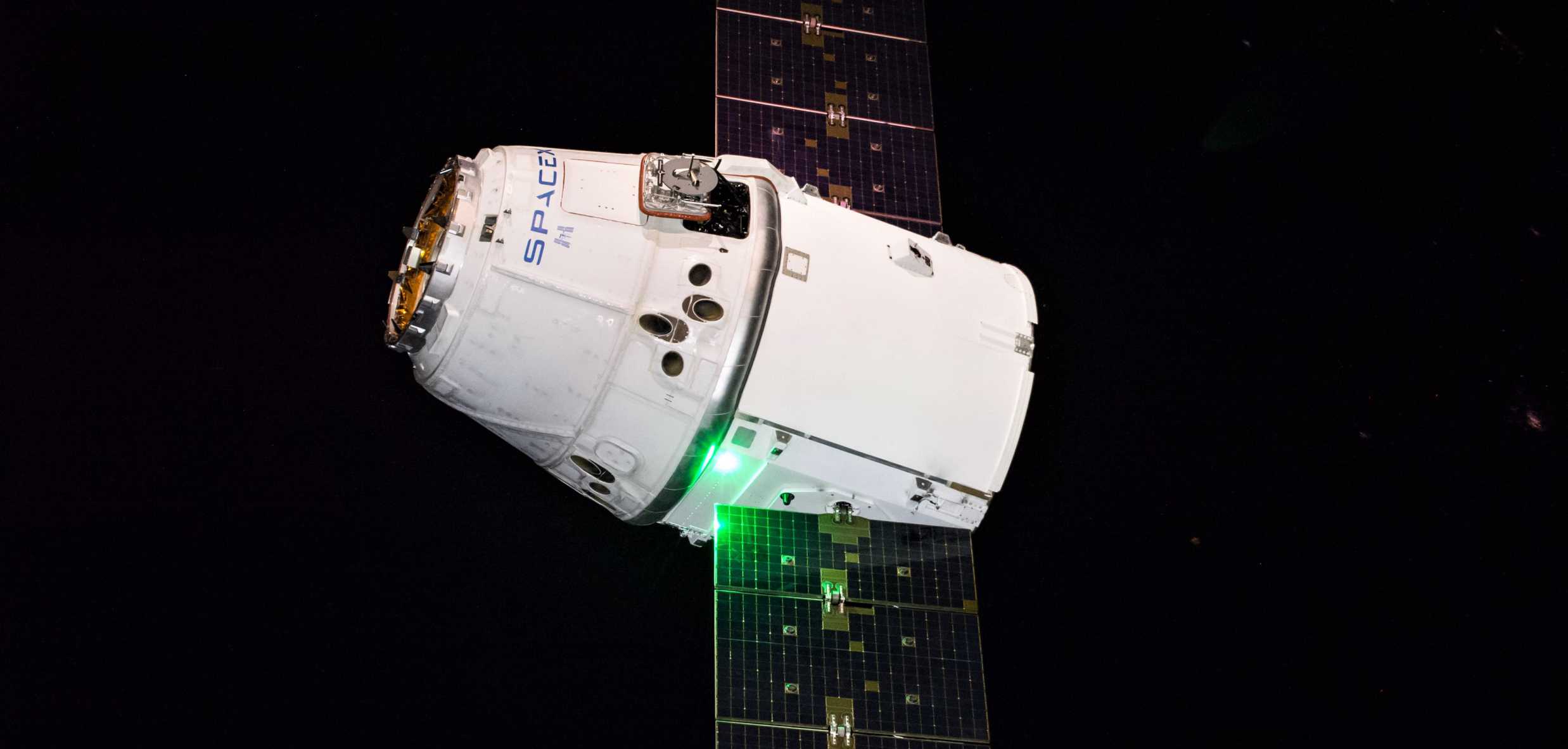
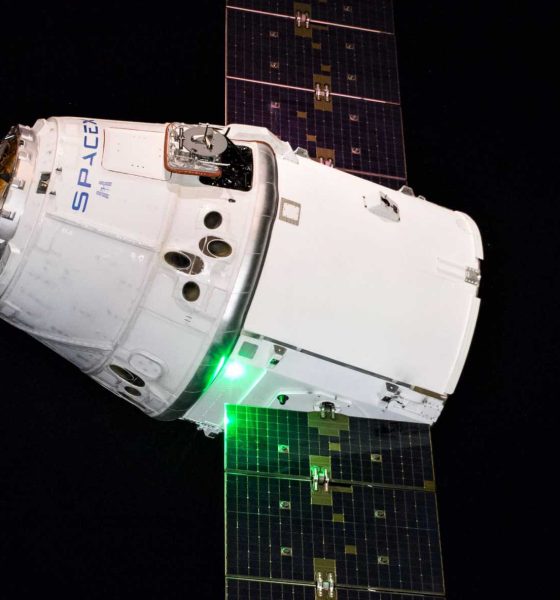
News
SpaceX first orbital spacecraft set to smash reusability record on last launch
The first orbital spacecraft designed and built by SpaceX is set to smash a reusability record on its 20th and final International Space Station (ISS) resupply launch, hopefully ending an exceptional career with yet another noteworthy achievement.
After a rocket-related hardware issue forced a four-day delay, a flight-proven Cargo Dragon spacecraft and Falcon 9 rocket are set to lift off no earlier than (NET) 11:50 pm EST, March 6th (04:50 UTC, March 7th) on NASA’s 20th and final SpaceX Commercial Resupply Services (CRS-20) mission. Although SpaceX’s final CRS1 launch, 20th mission milestone, flight-proven Dragon, and fairly quick Falcon 9 booster turnaround are all significant and exciting in their own ways, the most noteworthy technical aspect of CRS-20 can be found in the Dragon capsule that will soon be perched atop the tip of the rocket.
Shared on March 1st alongside confirmation of a successful Falcon 9 wet dress rehearsal (WDR) and static fire at its Cape Canaveral, Florida Launch Complex 40 (LC-40) pad, SpaceX revealed that Cargo Dragon capsule C112 (C1: Dragon 1; 12: capsule #12) will be supporting CRS-20 as early as this Friday. If all goes according to plan, it will be the spacecraft’s third cargo mission to the ISS since February 2017, becoming the third orbital SpaceX vehicle to do so. Even more significantly, C112 is poised to crush Cargo Dragon’s own previous record for the shortest time between two orbital launches.
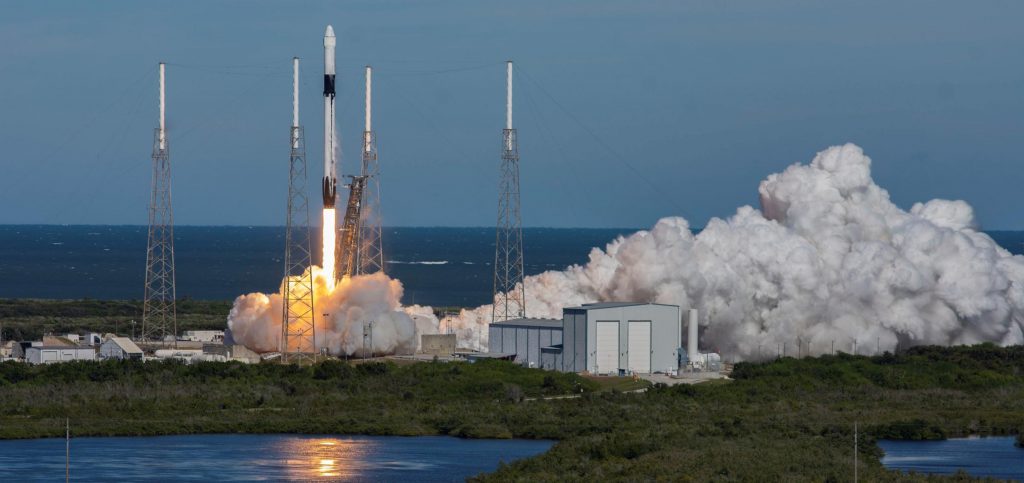
Back in June 2017, SpaceX became the first private company in history to successfully reuse an orbital-class spacecraft on its CRS-11 Cargo Dragon mission, itself the first private spacecraft in history to successfully rendezvous with the space station. Since then, all but one CRS mission has featured an orbit-proven Dragon capsule, making CRS-20 the ninth time SpaceX will attempt to launch a spacecraft into orbit for the second (or third) time.
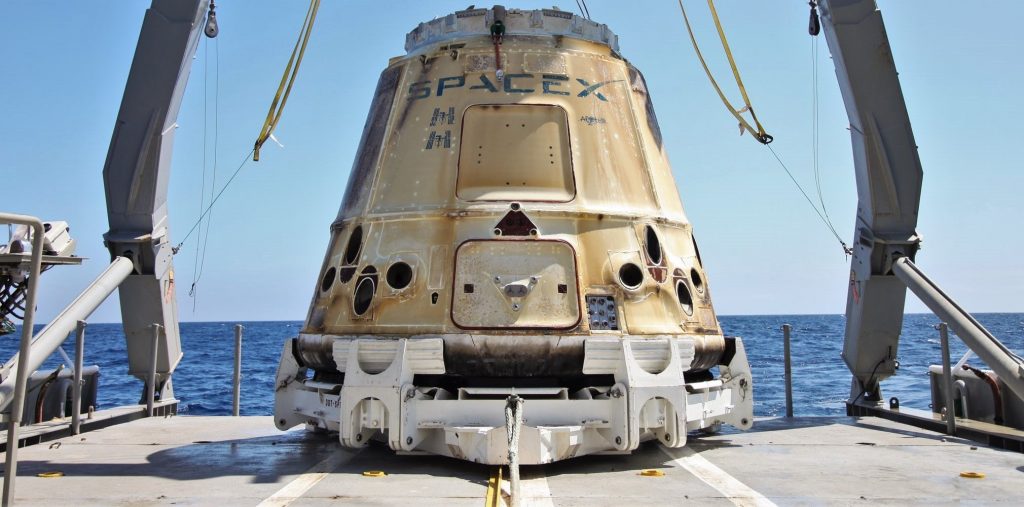
In other words, nearly half of all of SpaceX’s NASA CRS missions have featured flight-proven spacecraft, while several have also launched with flight-proven Falcon 9 boosters. Still, while extremely impressive that SpaceX has managed to convince the risk-averse space agency to fly several dozen tons of critical hardware on flight-proven rockets and spacecraft, Cargo Dragon capsule reuse has always been a comparatively lengthy and complex process.
Back in July 2017, just a month after SpaceX’s first successful Cargo Dragon reuse, CEO Elon Musk offered some insight into the capability’s potential value.
“Musk said he expects the next Dragon reuse and all future reuses to save SpaceX nearly 50% of the cost of manufacturing an entirely new spacecraft. Musk admitted that the first refurbishment of Dragon likely ended up costing as much or more than a new vehicle, but this is to be expected for the first attempt to reuse any sort of space hardware that must survive some form of reentry heating and saltwater immersion.”
Teslarati.com — July 21st, 2017
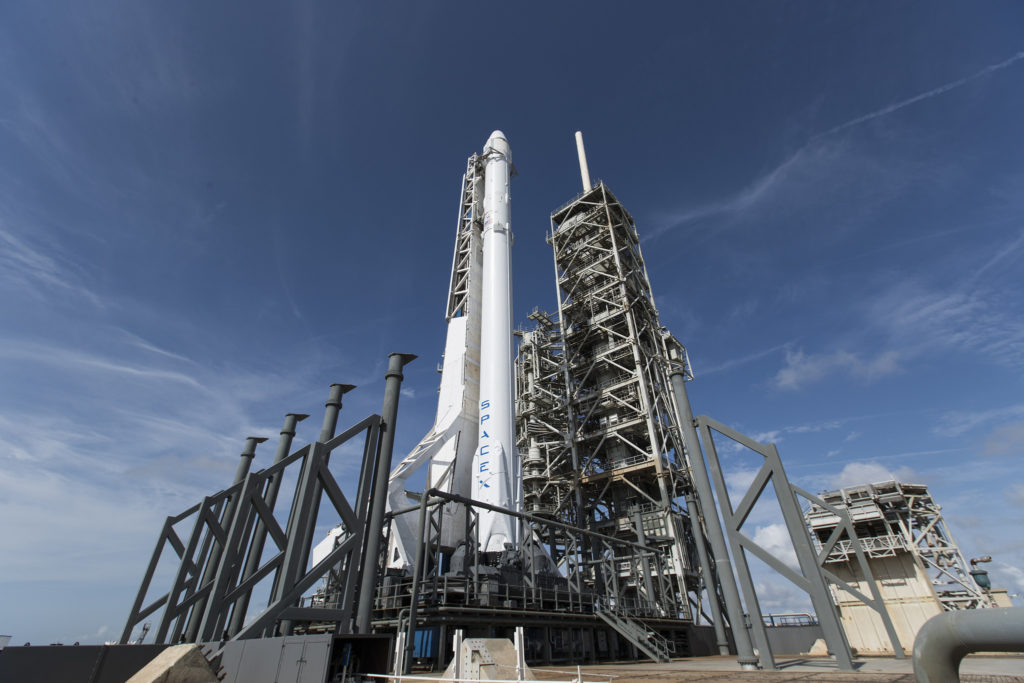
Ultimately, SpaceX has almost certainly realized Musk’s ambition of cutting the cost of orbital space station resupply missions in half (at least). Scheduled to launch on March 6th, Cargo Dragon capsule C112 last launched in December 2018, reentering Earth’s atmosphere and splashing down on January 13th, 2019. With CRS-20, the capsule could thus crush the previous record – 19 months – by more than 25%. Measured from splashdown to the capsule’s shipment to the launch pad, SpaceX may have spent less than a year refurbishing the Cargo Dragon spacecraft, likely more than a 50% improvement over all past refurbishment operations.
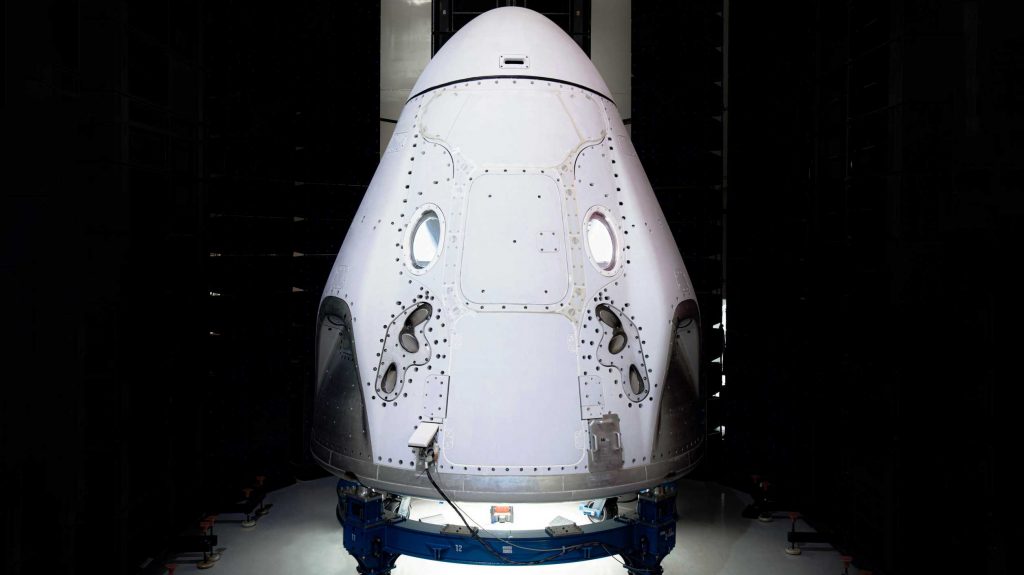
CRS-20 should thus mark a climactic and fitting end to Cargo Dragon 1’s nine-year spaceflight career. While bittersweet that the spacecraft and its many siblings will likely never fly again, Musk has said that Dragon 2 (Crew Dragon) – the spacecraft intended to replace it – is dramatically easier (and thus cheaper) to reuse than Dragon 1. As such, SpaceX should have no issue continuing its trend of lowering the cost of access to space after it begins space station cargo deliveries under its CRS2 NASA contract later this year.
Check out Teslarati’s Marketplace! We offer Tesla accessories, including for the Tesla Cybertruck and Tesla Model 3.

News
Tesla FSD fleet is nearing 7 billion total miles, including 2.5 billion city miles
As can be seen on Tesla’s official FSD webpage, vehicles equipped with the system have now navigated over 6.99 billion miles.

Tesla’s Full Self-Driving (Supervised) fleet is closing in on almost 7 billion total miles driven, as per data posted by the company on its official FSD webpage.
These figures hint at the massive scale of data fueling Tesla’s rapid FSD improvements, which have been quite notable as of late.
FSD mileage milestones
As can be seen on Tesla’s official FSD webpage, vehicles equipped with the system have now navigated over 6.99 billion miles. Tesla owner and avid FSD tester Whole Mars Catalog also shared a screenshot indicating that from the nearly 7 billion miles traveled by the FSD fleet, more than 2.5 billion miles were driven inside cities.
City miles are particularly valuable for complex urban scenarios like unprotected turns, pedestrian interactions, and traffic lights. This is also the difference-maker for FSD, as only complex solutions, such as Waymo’s self-driving taxis, operate similarly on inner-city streets. And even then, incidents such as the San Francisco blackouts have proven challenging for sensor-rich vehicles like Waymos.
Tesla’s data edge
Tesla has a number of advantages in the autonomous vehicle sector, one of which is the size of its fleet and the number of vehicles training FSD on real-world roads. Tesla’s nearly 7 billion FSD miles then allow the company to roll out updates that make its vehicles behave like they are being driven by experienced drivers, even if they are operating on their own.
So notable are Tesla’s improvements to FSD that NVIDIA Director of Robotics Jim Fan, after experiencing FSD v14, noted that the system is the first AI that passes what he described as a “Physical Turing Test.”
“Despite knowing exactly how robot learning works, I still find it magical watching the steering wheel turn by itself. First it feels surreal, next it becomes routine. Then, like the smartphone, taking it away actively hurts. This is how humanity gets rewired and glued to god-like technologies,” Fan wrote in a post on X.
News
Tesla starts showing how FSD will change lives in Europe
Local officials tested the system on narrow country roads and were impressed by FSD’s smooth, human-like driving, with some calling the service a game-changer for everyday life in areas that are far from urban centers.

Tesla has launched Europe’s first public shuttle service using Full Self-Driving (Supervised) in the rural Eifelkreis Bitburg-Prüm region of Germany, demonstrating how the technology can restore independence and mobility for people who struggle with limited transport options.
Local officials tested the system on narrow country roads and were impressed by FSD’s smooth, human-like driving, with some calling the service a game-changer for everyday life in areas that are far from urban centers.
Officials see real impact on rural residents
Arzfeld Mayor Johannes Kuhl and District Administrator Andreas Kruppert personally tested the Tesla shuttle service. This allowed them to see just how well FSD navigated winding lanes and rural roads confidently. Kruppert said, “Autonomous driving sounds like science fiction to many, but we simply see here that it works totally well in rural regions too.” Kuhl, for his part, also noted that FSD “feels like a very experienced driver.”
The pilot complements the area’s “Citizen Bus” program, which provides on-demand rides for elderly residents who can no longer drive themselves. Tesla Europe shared a video of a demonstration of the service, highlighting how FSD gives people their freedom back, even in places where public transport is not as prevalent.
What the Ministry for Economic Affairs and Transport says
Rhineland-Palatinate’s Minister Daniela Schmitt supported the project, praising the collaboration that made this “first of its kind in Europe” possible. As per the ministry, the rural rollout for the service shows FSD’s potential beyond major cities, and it delivers tangible benefits like grocery runs, doctor visits, and social connections for isolated residents.
“Reliable and flexible mobility is especially vital in rural areas. With the launch of a shuttle service using self-driving vehicles (FSD supervised) by Tesla in the Eifelkreis Bitburg-Prüm, an innovative pilot project is now getting underway that complements local community bus services. It is the first project of its kind in Europe.
“The result is a real gain for rural mobility: greater accessibility, more flexibility and tangible benefits for everyday life. A strong signal for innovation, cooperation and future-oriented mobility beyond urban centers,” the ministry wrote in a LinkedIn post.
News
Tesla China quietly posts Robotaxi-related job listing
Tesla China is currently seeking a Low Voltage Electrical Engineer to work on circuit board design for the company’s autonomous vehicles.

Tesla has posted a new job listing in Shanghai explicitly tied to its Robotaxi program, fueling speculation that the company is preparing to launch its dedicated autonomous ride-hailing service in China.
As noted in the listing, Tesla China is currently seeking a Low Voltage Electrical Engineer to work on circuit board design for the company’s autonomous vehicles.
Robotaxi-specific role
The listing, which was shared on social media platform X by industry watcher @tslaming, suggested that Tesla China is looking to fill the role urgently. The job listing itself specifically mentions that the person hired for the role will be working on the Low Voltage Hardware team, which would design the circuit boards that would serve as the nervous system of the Robotaxi.
Key tasks for the role, as indicated in the job listing, include collaboration with PCB layout, firmware, mechanical, program management, and validation teams, among other responsibilities. The role is based in Shanghai.
China Robotaxi launch
China represents a massive potential market for robotaxis, with its dense urban centers and supportive policies in select cities. Tesla has limited permission to roll out FSD in the country, though despite this, its vehicles have been hailed as among the best in the market when it comes to autonomous features. So far, at least, it appears that China supports Tesla’s FSD and Robotaxi rollout.
This was hinted at in November, when Tesla brought the Cybercab to the 8th China International Import Expo (CIIE) in Shanghai, marking the first time that the autonomous two-seater was brought to the Asia-Pacific region. The vehicle, despite not having a release date in China, received a significant amount of interest among the event’s attendees.








